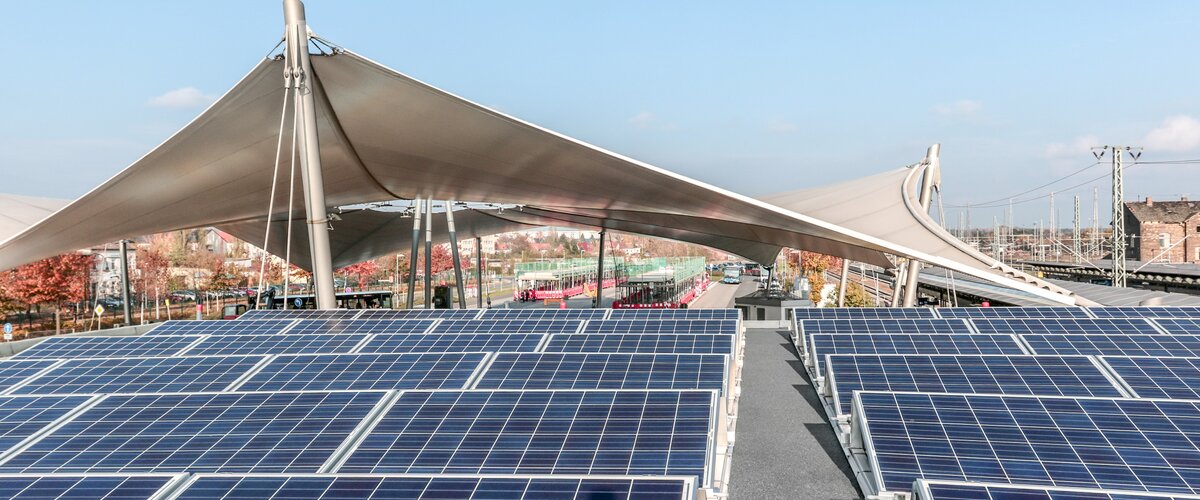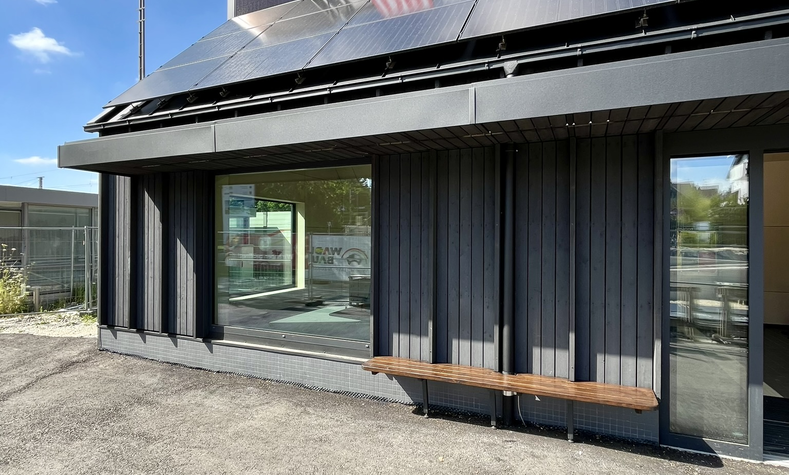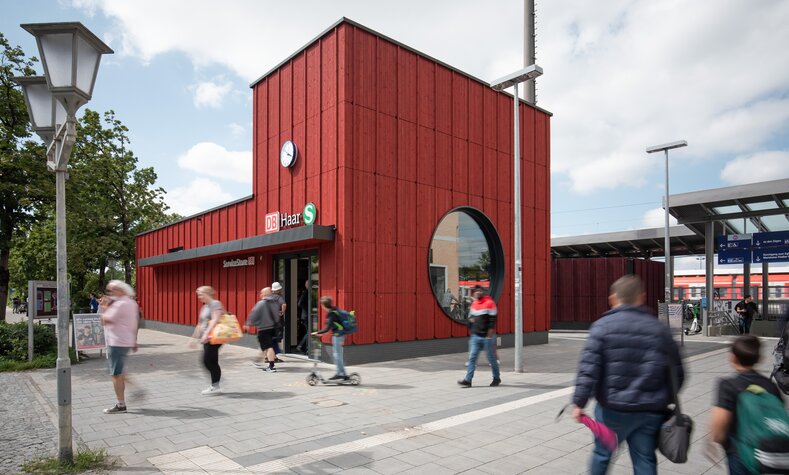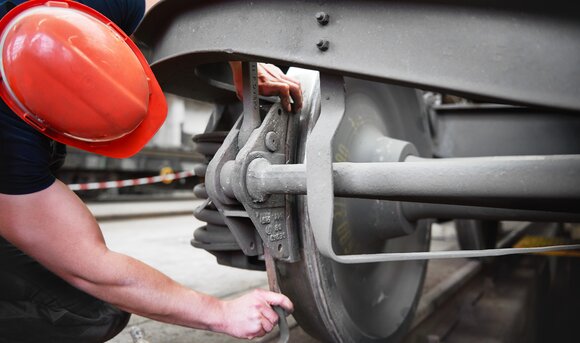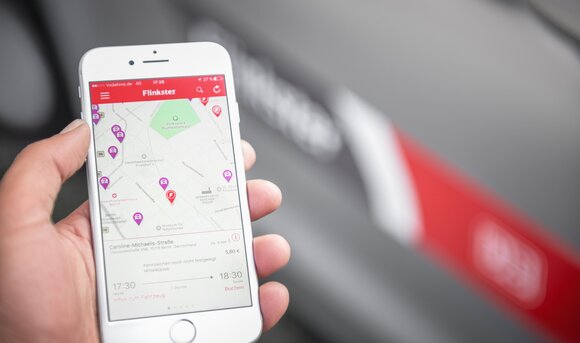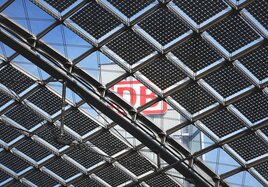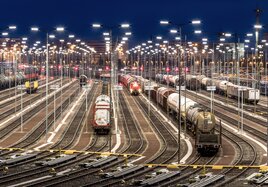At Deutsche Bahn, climate protection begins even before you board the train. It starts at our train stations, where sustainability plays a major role. Deutsche Bahn's green stations are an innovative concept that combines modern environmental standards with a high level of convenience for our customers. We build our stations with resource-saving materials and use modern technology and energy from renewable sources to run them.
The interaction of the various components makes our green stations role models for climate protection. They are the first of their generation to obtain their energy for heating, hot water and lighting from geothermal and photovoltaic systems on site. This means that the stations are largely self-sufficient. To ensure a 100% supply of renewable energy even at peak load times, we purchase any additional green electricity we need from the public power grid. In the event of overproduction by our plants, the surplus renewable power is fed into the public power grid. Green roofs also provide natural cooling and collect rainwater. But that's not all: large windows or skylights provide sufficient daylight and thus reduce energy requirements. In addition, ecological building materials are part of the "DNA" of the green stations - from the wooden roof structure to building materials from the region and sustainable materials throughout the buildings.
We opened the first green station in Kerpen-Horrem, North Rhine-Westphalia, back in 2014. The second is in Lutherstadt Wittenberg, Saxony-Anhalt. And we have begun construction on our next green station, in Bitterfeld. Recycled aluminum, a photovoltaic system and climate-friendly district heating will make the station a future standout in climate protection.
Small green station: first pilot station opened
We also want to build more sustainably at smaller locations. Our architects at DB Station&Service have developed a modular system for this. The modular timber construction method saves resources and makes building easier and faster. It cuts CO2 emissions in half compared to conventional construction using reinforced concrete.
We combine elements to meet each location's specific needs. The prefabricated elements are delivered and assembled on site in just a few weeks. The result is a building concept that ensures that every station fits the local conditions and meets the needs of our passengers as best as possible. Station operations are also sustainable. For example We reduce CO2 emissions by using photovoltaic systems, a battery bank from DB's own start-up encore and heat pumps.
around
50
CO2 emissions
saved through timber construction
In December 2023, we inaugurated the first of these small green stations in Zorneding in Bavaria. The pilot in Zorneding is now being followed by the next sustainable station building near Munich. The small green station in Haar has been in operation since the beginning of July 2024. Just like in Zorneding, the passenger building in the municipality of Haar is made entirely of prefabricated wooden elements and is operated in a climate-friendly manner thanks to a heat pump and photovoltaic system. A huge round window at the front provides sufficient daylight and thus reduces the need for artificial light. Environmentally friendly glazes were also used for the paintwork. The two small green stations will not be the only ones. Further locations are being examined throughout Germany.
This new concept will make it possible for us to build sustainably and cost-effectively even at smaller stops and at stations without passenger buildings. Thanks to our green stations, we're making a valuable contribution to saving resources and protecting the climate.
The concept of design of the small green stations was awarded the German Transport Turnaround Prize in November 2024. DB received the special prize in the building culture category for its innovative and sustainable ideas to make public transport more attractive and create a better quality of stay.
Green electricity supply for all stations
Since 2025, we have been taking a further step towards climate protection and have converted the power supply of all stationary facilities to 100 percent renewable power. In addition to our stations, this includes all maintenance depots, office buildings and facilities in Germany that are supplied by DB Energie GmbH. This also includes, for example, signal boxes, point heating systems and track area lighting. This brings us one step closer to our goal of being climate-neutral by 2040.
